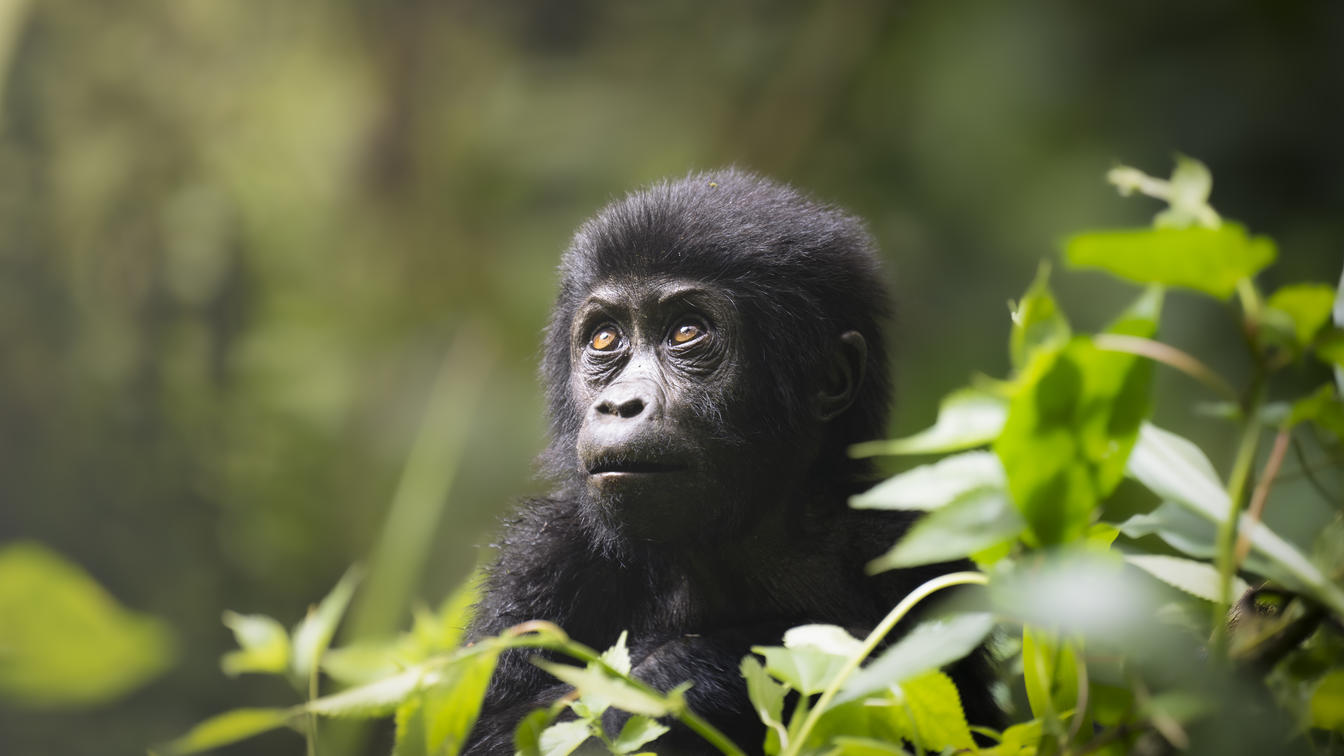Gorilla trekking in Uganda is a breathtaking adventure that offers travelers a unique opportunity to see the endangered mountain gorillas in their natural habitat. Here is a comprehensive overview of what to expect during a gorilla trekking experience in Uganda. This kind of activity can be done in 2 locations which are listed below;
Bwindi Impenetrable National Park: Home to nearly half of the world’s remaining mountain gorillas, Bwindi is the most popular destination for gorilla trekking in Uganda.
Mgahinga Gorilla National Park: This smaller park also offers gorilla trekking opportunities and is home to the unique Nyakagezi gorilla group.
The Gorilla Trekking Experience
- Arrival and Briefing
Park Headquarters: visitors start their day at the park headquarters, where they receive a briefing about safety guidelines, the rules for gorilla viewing, and group assignments. Typically, each group consists of up to 8 trekkers per gorilla family, allowing for a more intimate experience.
- The Trekking Process
Setting Off, after the briefing, groups are assigned to experienced guides who lead them into the forest in search of a gorilla family.
Trekking Duration, the trek can vary in length from 1 to 8 hours, depending on the location of the gorillas and the terrain. This experience can be physically demanding, as it involves hiking through thick forests, often on steep slopes.
- Encountering the Gorillas
Excitement Builds: once the trackers locate the gorilla group, trekkers are informed, and the anticipation builds.
Observation: visitors usually have about one hour to observe the gorillas. This time can be incredibly enriching as you watch them interact, groom, feed, and play. The experience is often described as both thrilling and humbling, witnessing these remarkable animals in their natural surroundings.
Respectful Distance, It is crucial to maintain a respectful distance, following the guidelines of the guides to ensure the safety of both the trekkers and the gorillas.
- What to Wear and Bring
Clothing: Wear long sleeves and pants to protect against thorns and insect bites. Sturdy hiking boots are essential.
Essentials: Bring water, snacks, sunscreen, a hat, and your camera or binoculars. A rain jacket is also advisable due to the unpredictability of weather in the tropical rainforest.
- Post-Trek Experience
Reflection and Discussion, after the trek, many trekkers share their thoughts and experiences, often finding the encounter profoundly impactful.
Conservation Contribution, the funds generated from trekking permits go toward conservation initiatives, local community development, and the protection of gorillas and their habitat.
Below are the reasons why you should not miss Gorilla trekking experience when you visit Uganda.
- Close Interaction with Mountain Gorillas: Uganda is home to nearly half of the world’s remaining mountain gorilla population. Trekking provides a rare opportunity to observe these magnificent creatures in their natural habitat, witnessing their behavior, social interactions, and playfulness up close.
- Support for Conservation Efforts: Funds generated from gorilla trekking permits contribute significantly to conservation initiatives aimed at protecting mountain gorillas and their habitat. Trekking helps raise awareness about wildlife conservation and supports efforts to maintain biodiversity.
- Local Community Benefits: Revenue from trekking permits also supports local communities, helping to foster coexistence between locals and wildlife and promoting sustainable tourism. This encourages locals to participate in conservation efforts.
- Diverse Ecosystem: Uganda’s national parks, especially Bwindi Impenetrable Forest, are rich in biodiversity. The lush scenery, diverse flora and fauna, and dramatic landscapes provide a breathtaking backdrop for trekking.
- Primarily in Rainforest: Trekking through dense tropical rainforest is an adventure in itself, filled with opportunities to see various plant species, birds, and other wildlife.
- Engagement with Local Communities: Visitors often get to learn about the culture and customs of the local Batwa and Bakiga people, enriching the travel experience and fostering cultural appreciation.
- Local Guides: Interacting with knowledgeable local guides who share insights about the gorillas, their behavior, and the local ecosystem enhances the overall experience and support for community employment.
- Challenging Trek: The trek can be physically demanding and appeals to adventure seekers who enjoy hiking and outdoor activities. It provides an opportunity to immerse oneself in nature while staying active.
- Sense of Achievement: Successfully tracking and encountering mountain gorillas can be an incredibly fulfilling and exhilarating experience, creating lasting memories.
- Capture Unforgettable Moments: The chance to photograph and film gorillas and their surroundings offers wildlife enthusiasts and nature lovers a chance to capture stunning images that tell a story and share experiences with others.
- Connection with Nature: Spending time in the forest, listening to the sounds of nature, and observing wildlife can be meditative and restorative. It offers a break from the hustle and bustle of everyday life.
Gorilla trekking in Uganda is a once-in-a-lifetime experience that combines adventure, breathtaking scenery, and the opportunity to connect with one of the most endangered species in the world. It’s an unforgettable journey that fosters a deeper appreciation for wildlife conservation and the beauty of nature. Whether you’re a seasoned traveler or a first-time visitor, gorilla trekking is an adventure that will leave a lasting impression on your heart and mind. it’s also about supporting conservation, experiencing the beauty of nature, and engaging with local cultures. It creates lasting memories and a deeper appreciation for wildlife and the environment, making it a transformative experience for many travelers. Whether you are a wildlife enthusiast, an adventure seeker, or someone looking for a unique travel experience, gorilla trekking in Uganda offers something truly special.

